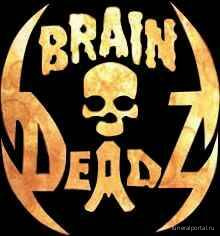Mark Levine, who made his mark in the jazz world as a pianist, trombonist, composer, arranger, and educator, died on Jan. 27 at Sunrise Assisted Living Facility of Oakland Hills, Calif. He was 83.
The cause was complications of pneumonia, according to his life partner, the writer and activist Norma Smith.
An in-demand sideman for luminaries like Houston Person, Stan Getz, Blue Mitchell, Joe Henderson, and others in jazz —first as a valve trombonist and then a pianist — Levine later distinguished himself for his versatility and inside-baseball command of Afro-Cuban and Brazilian music with the likes of Cal Tjader, Luis Gasca, Willie Bobo, Pete Escovedo, Poncho Sánchez, and Mongo Santamaría.
Drummer Ron Marabuto tells WBGO: “I first met Mark back in the San Francisco jazz scene in 1974. He was always interested in Latin music in one form or another. He would bring in his own compositions and tell me what clavé direction they were in to make sure they would be performed correctly.”
But it was as a pedagogue that Levine became legendary, through a pair of instructional texts: The Jazz Piano Book, first published in 1990, and the The Jazz Theory Book, published in 1995. Translated into numerous languages, they have become standard texts on the college level for jazz education worldwide. “As a knowledge base for the understanding of jazz improvisation, Mark’s books are unmatched,” says Peter Barshay, the longtime bassist for Levine’s group The Latin Tinge. “His understanding of the theoretical basis of jazz harmony was incredible.”
Tributes have poured in on Levine’s Facebook page, including some from fellow artists like flutist Mark Weinstein and pianist Benny Green. Latin jazz pianist, educator and author Rebeca Mauleón recalled taking a lesson with him when she was 17, and later reconnecting around his research for The Jazz Piano Book.
Mark Jay Levine was born on Oct. 4, 1938, in Concord, New Hampshire. His father, Hyman “Harry” Levine, originally hailed from Minsk, Belarus, and ran a women’s clothing store. His mother, the former Sarah Lubovitz, was a homemaker who had been born in Russia. He had an older brother by eight years, named Earl.
Piano was Levine’s first instrument; he began taking lessons at age 5. By his middle school years, his family had moved to Daytona Beach, Fla. “He was pretty badly affected by the anti-Semitism he experienced there,” says Smith. “He worked as a lifeguard and golf caddy in those early years in Florida.”
His musical world was forever changed at age 12, when his brother gave him a jazz recording. He quickly became enamored of the great jazz pianists — starting with Dave Brubeck, Bud Powell and Bill Evans. While attending Seabreeze High School in Daytona Beach, Levine also began playing the valve trombone.
“Mark’s father wanted him to be in the hospitality industry, but he went to Boston College and majored in music,” Smith says. “He spent a lot of time hanging out at the Berklee College of Music, because there was nothing happening jazz-wise at Boston College. But while he was there, he concentrated his studies on arranging and eventually graduated with his degree in music.”
A subsequent move to New York City in 1960 led to studies with arranger Hal Overton, pianist Jaki Byard, and trombonist Herb Pomeroy. His first record date, in ’66, was as a trombonist on the Houston Person album Underground Soul. Levine goes toe-to-toe with the tenor saxophonist on the album, as well as contributing an original, “Tears.”
As a pianist, Levine was making inroads into New York’s Latin jazz scene — as on a 1969 date for Santamaría, which first saw release in 2000. It was on this album where Levine contributed the first iteration of his most famous composition, “Linda Chicana.” Originally titled “Sheila,” it features Hubert Laws on flute, with Mark on piano in the Cuban guajira style, but in a modern approach.
Trumpeter Luis Gasca’s now-classic 1969 release The Little Giant finds Mark sharing piano duties with Herbie Hancock, alongside Santamaría’s congas and Joe Henderson’s tenor saxophone. On “Motherless Child,” Levine is featured on the intro, and his comping comes to the fore in a modern uptempo jazz mambo setting, influenced by a new hero of his, McCoy Tyner.
A brief move to Los Angeles, and then on to San Francisco in 1974, sharpened Levine’s focus as a valve trombonist. “Mark was a fantastic trombone player,” attests Ron Marabuto. “That instrument was really his voice; he was really happy when he played it. Jazz was going through some evolutionary changes at that time, particularly with players like Woody Shaw and Freddie Hubbard. Mark was doing what those guys were doing, but on the trombone. I had never heard anyone play the instrument with that approach before.”
Evidence of this can be found throughout Levine’s 1984 album Concepts, especially on his original tune “Keeper of The Flame.” With a slight nod to Bud Powell’s “Un Poco Loco,” he shines on the instrument alongside Chuck Clark on tenor sax, Jeff Carney on bass and Erik Von Buchau on drums.
It would prove to be not only his high-water mark as a valve trombonist, but also his swan song — owing to a condition that was eventually diagnosed as Tension myositis syndrome, or TMS. “A week after that album was released,” Levine once reminisced, “I put the trombone in the closet and never looked back. Ever since then all I’ve been is a pianist.”
The Bay Area’s vibrant Latin jazz scene — led by percussionists John Santos, Pete Escovedo and Michael Spiro, among others — was producing groups like the forward-thinking Latin rock fusion group Azteca and guitarist Carlos Santana. As a pianist on that scene, Levine became a potent force in moving the genre forward, while diving deep into the roots of the music. It all came to full fruition with the formation of his own piano-led ensemble, The Latin Tinge.
Inspired by Jelly Roll Morton’s quip to Alan Lomax about “the Spanish tinge” in jazz — and also by a 1979 tome by John Storm Roberts, The Latin Tinge: The Impact of Latin American Music on the United States — Levine’s band produced a series of impeccably recorded albums showcasing Afro-Cuban and Brazilian rhythms in a small-group setting. Tight arrangements, fealty to the clavé authenticity in performance, and his unique harmonic approach yielded works worthy of study for their harmonic and rhythmic sophistication.
The title track from Isla, the quintet’s Grammy-nominated 2002 release, is a perfect example of this approach — morphing seamlessly from the northeastern Brazilian rhythm known as baião to Puerto Rican bomba sicá to Cuban guaguancó, all framed by his advanced harmonic approach.
Besides his superb playing as both sideman and leader, Mark’s impact as an educator has proved to be his most lasting influence. His books have become legendary, but his direct contact with his students yielded fruit that continues to grow.
In 1970, he began to teach in earnest both privately and at various institutions like Mills College, Antioch University and The San Francisco Conservatory of Music, among others. He also maintained a long-running association with the California Jazz Conservatory, and spearheaded the Bay Area Jazz Archives (BAJA), a compendium of recordings by San Francisco Bay Area jazz artists from 1970 to 2000. “Some of the music is pretty extraordinary, and really should be heard,” he said when the initiative launched. “So we’re hoping to get exposure for the music, the artists, and the label.”
On a personal note, I admired Mark supremely. When it came time to fight the Grammys for taking away the Latin jazz category about 11 years ago, he stood by me, Dr. Ben Lapidus, and Dr. Eugene Marlow when we collectively sued the Grammys for the injustice they perpetrated. That lawsuit was the turning point in the restoration of the category. Besides respecting and never forgetting him for his supreme musicianship, I will always love him for that act of solidarity and bravery.
“That was an example of Mark’s politics,” says Smith. “He was liberal but intuitively radical. Mark also was very humble. He was cognizant of the vast knowledge that he possessed. But he never let it get to his head. It was that humility and sense of humor that he possessed that I admired. He was truly about being human.”
She says he played for the last time on Dec. 26, improvising a theme on a grand piano. When he concluded this invented piece, he turned to her and said, with a wry smile, “That’s it.”
With special thanks to all of the interviewees, and to KUVO's Arturo Gomez.










